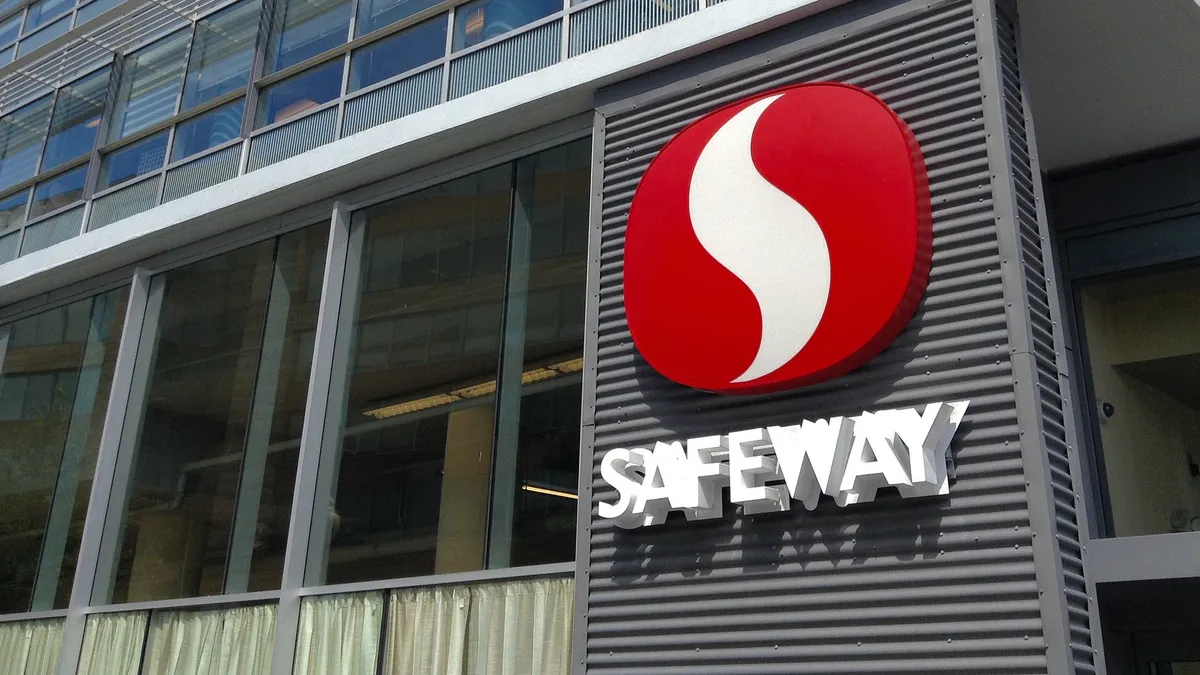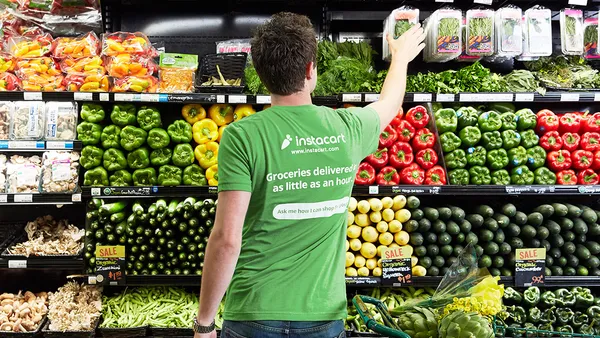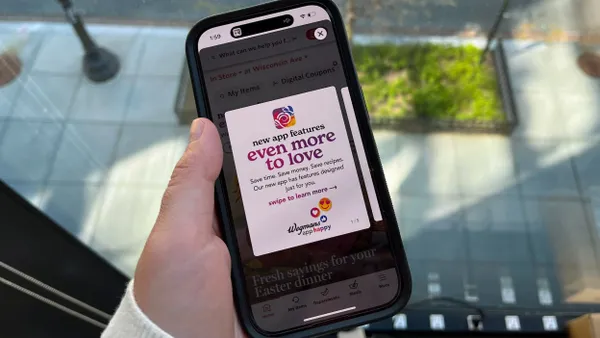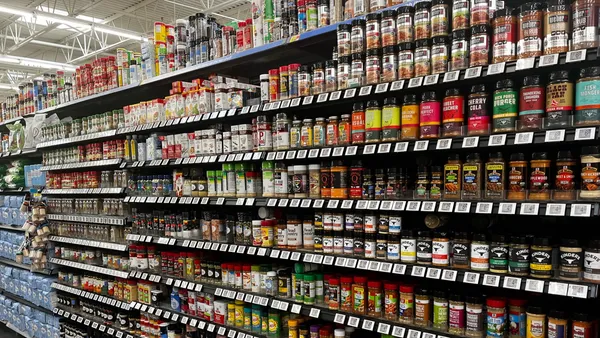Dive Brief:
- Albertsons posted strong e-commerce sales growth of 52% for the fourth financial quarter and 83% for fiscal year 2018, according to a company release. During a conference call Wednesday, executives said the company plans to continue expanding services — including its Drive Up & Go store pickup program — while also driving innovation and deepening its partnerships with digital firms.
- Outgoing president and CEO Jim Donald, who will be replaced Thursday by former Pepsico North America CEO Vivek Sankaran, said Albertsons will also remodel more stores and open more new locations this year. He declined to give specific numbers but told analysts company plans to update more than 250 stores compared to 128 in 2018, and to open between 12 and 14 stores compared to six openings last year. Albertsons’ capital expenditures totaled $1.4 billion in fiscal year 2018.
- For the fourth quarter, Albertsons reported a same-store sales increase of 1.1% and net sales of $14 billion. Gross profit margins increased to 29%, up from 28.1% during the same period last year. Adjusted EBITDA totaled $727 million, or 5.2% of sales, compared to $712 million, or 5.1% of sales, last year, reflecting better-than-expected fuel margins and identical sales performance. Full-year adjusted EBITDA totaled $2.74 billion, up 14%.
Dive Insight:
Amazon has Whole Foods, Target has Shipt, Kroger has Ocado, Ahold Delhaize has Peapod and Walmart has Jet.com along with more than 2,000 stores nationwide offering its popular grocery pickup service.
Albertsons, on the other hand, hasn’t laid down a transformative acquisition or partnership, or otherwise established a program that differentiates its online grocery program from other large competitors. This could hamper the Boise-based grocer, which operates 19 banners, as companies jockey for consumers’ e-commerce dollars and the need to drive down costs grows.
Seeming to respond to this very point, Donald said during Wednesday’s earnings call that "small moves are adding up" for Albertsons. This includes a delivery tie-up with Instacart that touches nearly 2,000 stores, a click-and-collect service that’s only at 250 stores but quickly growing, an online marketplace and a digital marketing asset that launched last year.
"The industry may think we’re playing catch-up with e-commerce … but when you look at the whole picture, we’re changing the game for customers in small, simple ways," Donald said on the call.
Albertsons also has a few initiatives in testing mode, including a deal to place two micro-fulfillment centers in the San Francisco Bay Area this September. That deal, if successful, could quickly scale to additional locations, Donald said.
In an interview with Grocery Dive late last year, Narayan Iyengar, Albertsons' senior vice president of digital and e-commerce, said the company doesn’t need a headline-grabbing deal to move the dial on e-commerce. What’s important, he said, is that it has the right tools in place for the right stores and markets. Albertsons relies on Instacart as well as its own fleet of delivery vehicles to fulfill orders. Store pickup works in some markets but not others. And as fulfillment needs increase, some markets will be suited to automated micro-warehouses while others might be best served by traditional fulfillment centers.
Albertsons' strong e-commerce growth over the past year validates Iyengar’s outlook. In addition, the Boise-based retailer is focused on improving its physical stores. It’s stepping up the pace of remodels, bringing in more self-checkouts and rolling out mobile scan-and-go technology at more stores and fuel stations.
Like all other major grocers, Albertsons is also building out its private label portfolio. It now operates four billion-dollar brands, Donald said, with considerable growth coming through its all-natural labels. Sales of Open Nature and O Organics grew by 14% in Q4 and, combined, now account for a quarter of all natural and organic sales.
Competitive pressures and the rapid pace of change mean incoming CEO Vivek Sankaran will have to hit the ground running. Further complicating matters is the pressure to eventually go public following last year's failed Rite Aid merger. With continued growth, debt reduction and the right market conditions, Albertsons could go public in the next 12 to 18 months, Donald estimated, noting the company’s debt-to-EBITDA ratio needs to come down to 3x from its current 3.5x.













